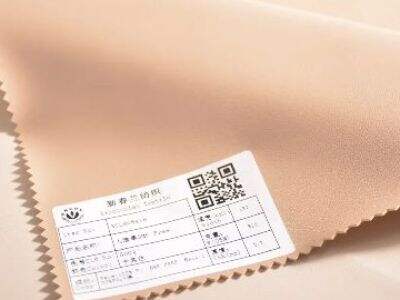To do so, when you are making clothes or other fun projects, you might need fabrics for bonding to help stick everything neatly together. Bonding fabric, also known as fusible interfacing, is a type of very thin and lightweight special fabric. It has glue on one side that is heat-activated. This means that, when you press an iron against the bonding fabric, the glue is dissolved. However, when the glue melts, it gets two pieces of fabric stuck together quite tightly.
How to Select Bonding Fabric
There are many important things to consider when choosing bonding fabric for your next project. First, you need to consider your fabric’s weight. The weight is a term used to describe whether the fabric is heavy or light. You want the perfect weight for your bonding fabric—not too heavy lest your project become bulky, and not so light that it can’t hold everything in place.
Second, think about the color of your bonding fabric. You want your bonding fabric to match the color of your main fabric as closely as possible to avoid shadows coming through. It will look so better and professional if they are of the same color. You don’t want anything to be a surprise where you see the bonding fabric.
And finally, consider the feel of your fabric. The texture is how it feels to the touch. You will want your bonding fabric to feel like your main fabric. If they are different, like if one is very smooth and one is rough, it can make your project feel stiff or awkward. Choosing a bonding fabric with a similar texture will ensure that your project feels nice and comfortable.
More Things to Consider When Choosing Bonding Fabric
However, there is more to it when it comes to selecting your bonding fabric. Well, there are a couple answers that could apply depending on the surface/fabric you are working with. Bonding fabric is needed by different kinds of fabrics. So, if you are working with cotton, your bonding fabric may differ from if you were working with a stretchy material. Choose the correct bonding fabric to go with your main fabric.
Knowing what you work on is also crucial. If you're making something that's supposed to be really sturdy and strong, like a bag or coat you'll need a heavier bonding fabric to help it hold up. If, on the other hand, you are constructing something that needs to be lightweight and flexible, such as a dress or a shirt, you should select a lighter bonding fabric. That way, your project would have the right feel and function for what you want to build.
How to Test Bonding Fabric
In order to use this bonding fabric, the first one to do is to test. It helps you get a feel for whether the fabric is a good match for what you’re making. To test your bonding fabric, cut out a small piece of your main fabric and of the bonding fabric. Next, line the glue side of the bonding fabric (the rough side) behind the fabric you are going to use on the back of your main fabric. Then, use an iron to fuse the two fabrics .
Otherwise, if you find the bonding fabric is fine and the two fabrics bond really well together then you can go merrily use that bonding fabric while doing your project. But if the bonding fabric doesn’t stick very well or moves around, you might try a different kind to see if you get better results.
Top Mistakes To Avoid When Working With Bonding Fabric
There are general mistakes to avoid when working with bonding fabric. And there’s one big mistake, which is using too much heat from the iron. Too much heat wilt melt the glue atop, which can assistance the fabrics stick jointly likewise strongly. They may even warp or stretch, which can ruin your project.
Another error to look out for is insufficient heat. Heating the bonding fabric insufficiently will leave the bond weak, and your project will unravel eventually, and so on. You want a nice balance with the heat you use.
Finally, it’s worth noting that choosing the wrong type of bonding fabric for your particular project can lead to issues, too. Choosing appropriate bonding fabric for you is really important. This will help ensure your project looks exactly like you want it.
Therefore, pick the correct bonding fabric for your next undertake and you will be amazed at the difference it can make on the final product! As long as you understand the basic principles of bonding fabric and take all the consideration of choosing the best type for your personal usage, you can know that you are making the best decision. Testing and evaluating your bonding fabric prior to working with it, as well as avoiding some common pitfalls, will help ensure your project is a successful one. Explore other bonding fabrics to determine the one that suits your needs while starting your next project!

 EN
EN
 AR
AR
 NL
NL
 ES
ES
 FR
FR
 DE
DE
 EL
EL
 IT
IT
 JA
JA
 KO
KO
 PT
PT
 RU
RU
 IW
IW
 TL
TL
 UK
UK
 VI
VI
 MS
MS
 FA
FA
 BE
BE
 UR
UR
 MN
MN
 MY
MY
 BG
BG
 HR
HR
 CS
CS
 DA
DA
 FI
FI
 HI
HI
 NO
NO
 PL
PL
 RO
RO
 SV
SV
 ID
ID
 TH
TH
 GL
GL
 ET
ET
 SQ
SQ
 AF
AF
 BN
BN
